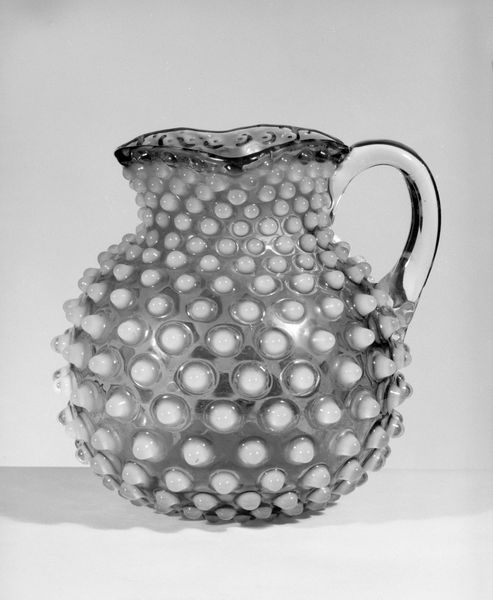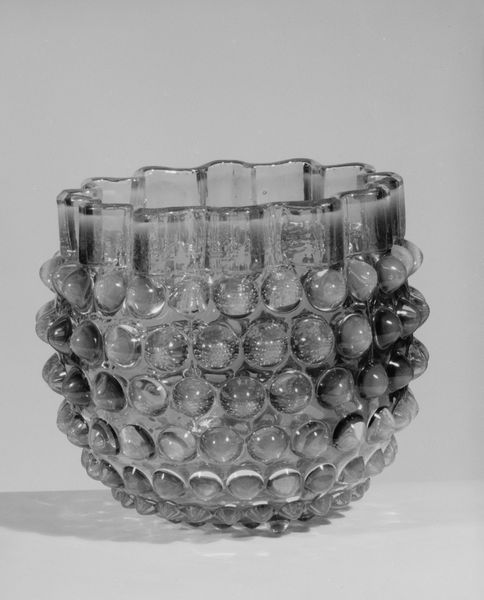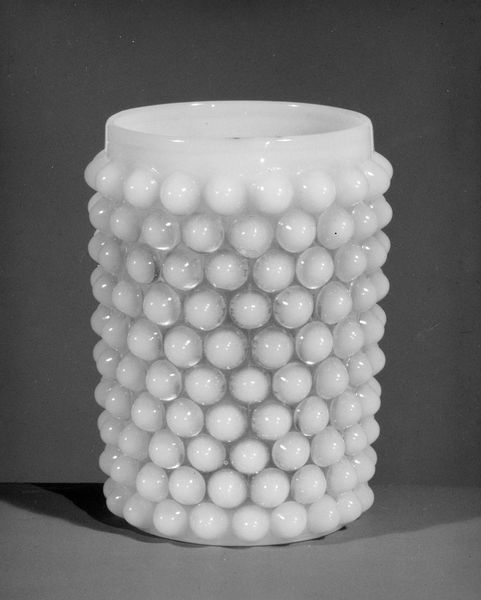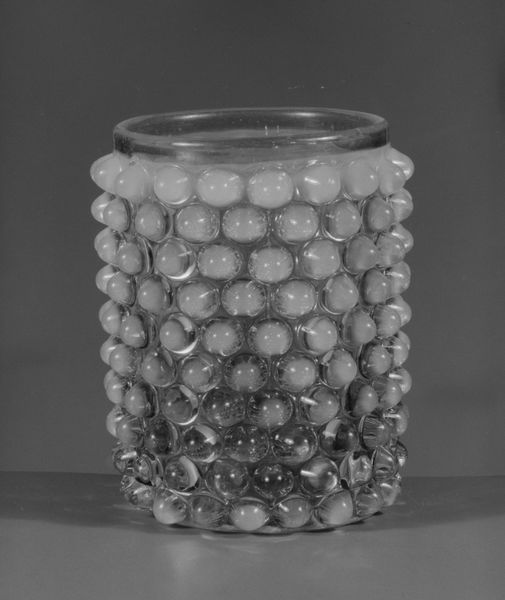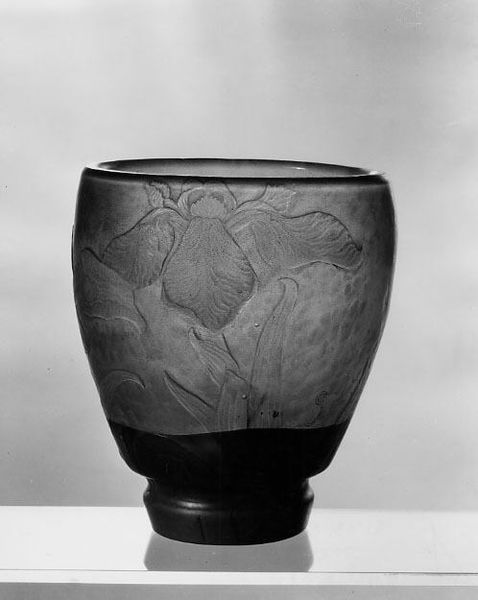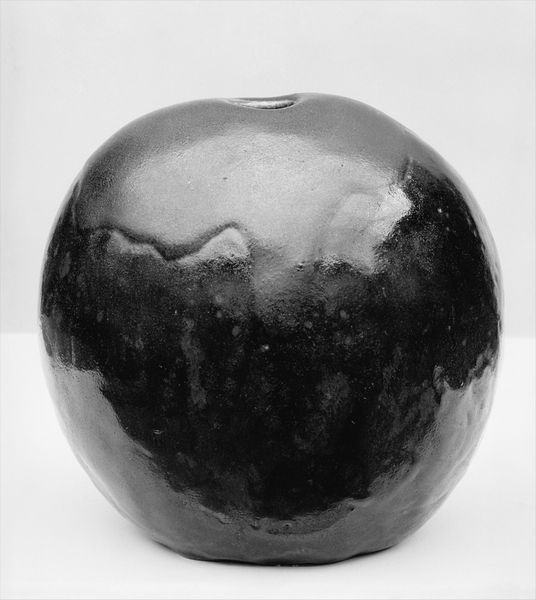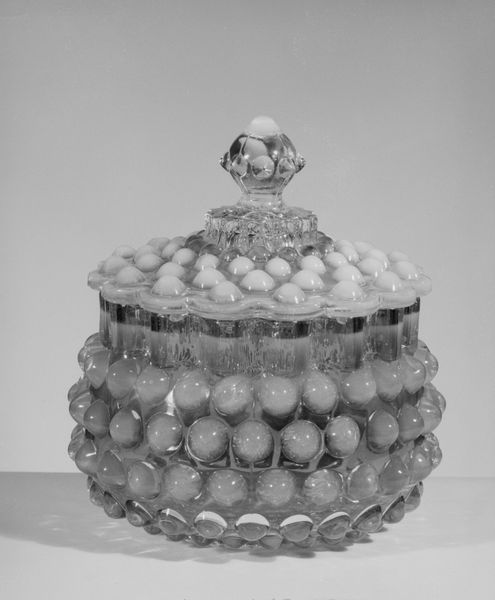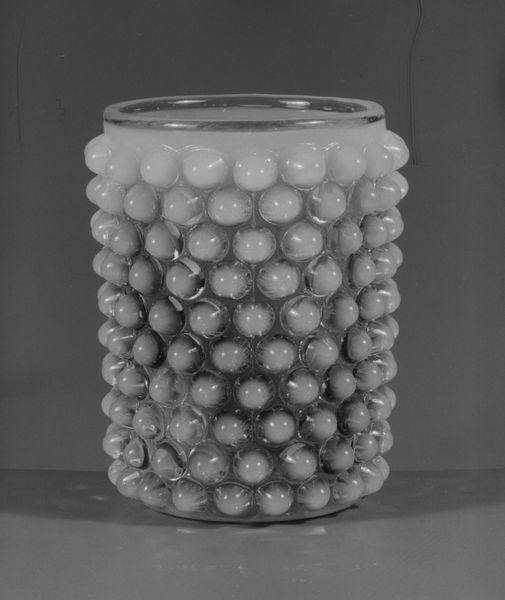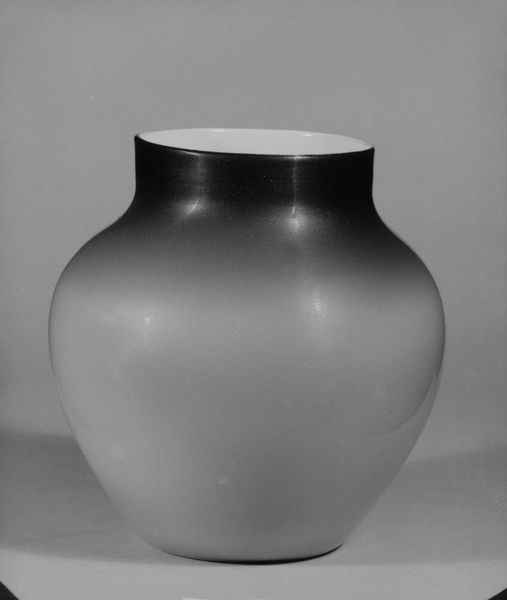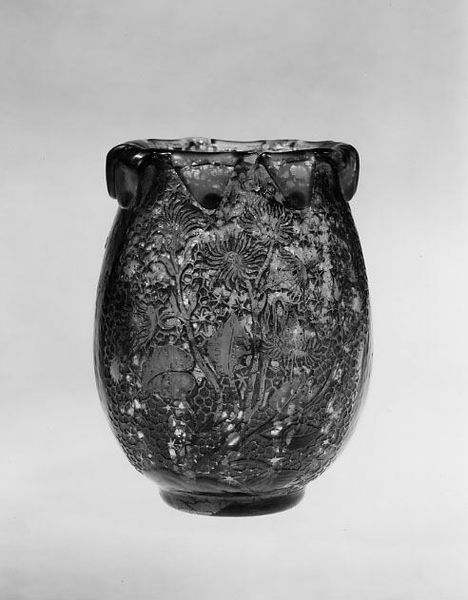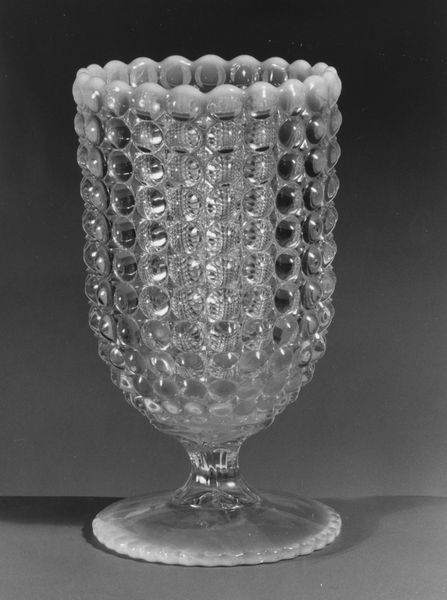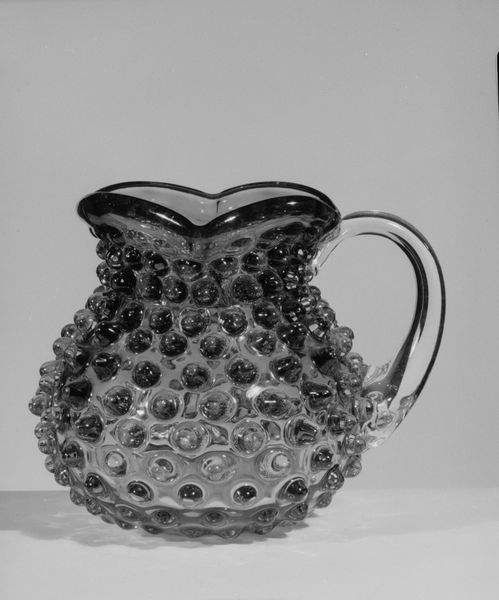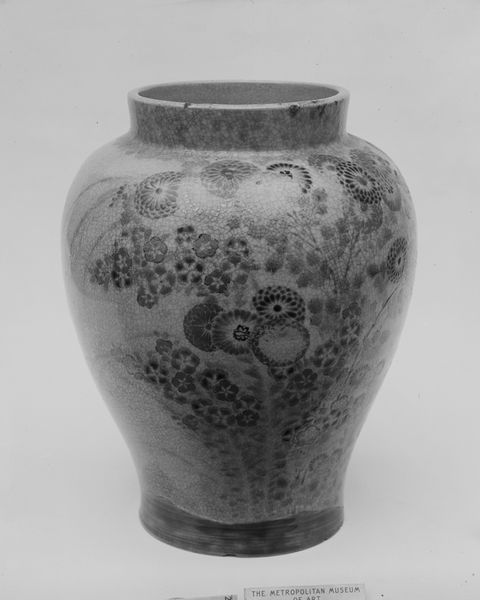
ceramic, earthenware
#
asian-art
#
ceramic
#
earthenware
Dimensions: H. 2 3/4 in. (7 cm)
Copyright: Public Domain
Curator: Here we have a Japanese earthenware cup, probably dating from between 1830 and 1850. You can find it here in the Metropolitan Museum of Art. Editor: It has a strange yet peaceful presence; the white flower-like details contrasted with a sleek dark base definitely caught my attention. It makes me want to hold it! Curator: It is tempting, isn't it? Cups such as these were an integral part of social rituals. While it is hard to pinpoint the maker or origin with certainty, these kinds of cups reflected the flourishing of merchant culture and increasing domestic consumption of fine wares in Japan at that time. Editor: I think of it as less domestic, more about private practice. Is the artist using images of privilege to critique it or to take advantage of this? To me it feels like something more intimate and personal. Who would use such a cup, and under what conditions? Was it accessible for daily usage or specifically for upper-class people to show off with? Curator: What intrigues me is the duality inherent in such objects. It serves the practical purpose of holding liquid, yet its existence hinges on a complex web of social interactions. As such, the cup exists because of Japan’s ceramic industry and consumers ready to welcome it into their homes. I imagine social gatherings filled with such objects as statements of affluence. Editor: It feels strange thinking about these details in relation to something as vulnerable as an earthenware cup. Considering what type of statement someone would be attempting to make brings questions around social hierarchies. We should consider whether those at the margins even have access to art—art becomes more than mere beauty, doesn’t it? Curator: Absolutely. Every artifact holds multiple narratives. Appreciating objects like these prompts critical questions regarding consumption and class that ripple across cultures and historical periods. Editor: And hopefully the questions it raises today can give us tools for thinking about today’s inequalities.
Comments
No comments
Be the first to comment and join the conversation on the ultimate creative platform.

